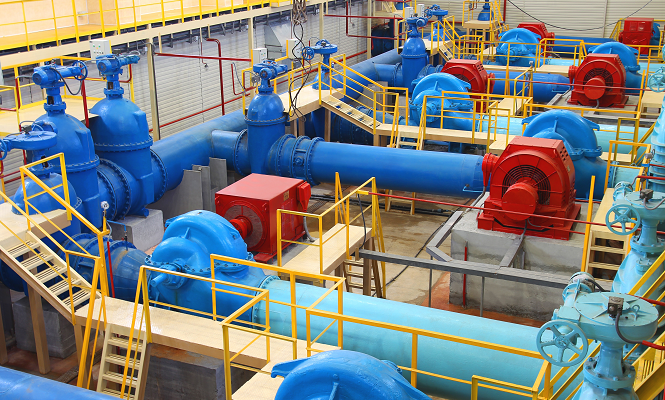Saving Water Goes Hand-in-Hand with Saving Energy. Federal Research Should Capitalize on Their Integration.
Let's Save Energy
Alliance to Save Energy's Blog

It takes energy to get water, and it takes water to get most energy. We ought to consider them together, because policies that encourage us to use one more efficiently often reduce our need for the other.
It takes energy to decontaminate the water at your local water utility and even more to pump it to your faucet (about 80 percent of a drinking water utility’s electricity use). Wastewater treatment facilities use significant energy too. Every gallon of water saved is a gallon that is not pumped, treated, or delivered – so saving water means saving energy.
Water also plays a notably outsized role in power generation. Most power plants need water both to create steam for turbines as well as for cooling equipment. More than four times as much water is withdrawn to support power generation across the U.S. than is used by our homes and commercial buildings combined. We must think about water efficiency when using energy, just as much as we must think about energy efficiency when using water.
Congress Looks to Integrate Federal Research
A bipartisan bill advanced through the U.S. House Committee on Science, Space, and Technology today would help ensure that the Department of Energy does just that. The Energy and Water Research Integration Act, sponsored by Rep. Eddie Bernice Johnson (D-Texas) and Rep. Frank Lucas (R-Okla.), would ensure that the Department considers water intensity within its research on energy and water distribution systems. The Alliance, joined by several companies and organizations, has written a letter to lawmakers this week in support of the legislation.
Here are a few examples of energy-water research opportunities – just some of the ways the bill could help trim energy and water use.
Tools for Efficiency for Both Water & Energy
Buildings codes and appliance and equipment standards are no stranger to the concept of tying together energy savings and water savings. The Department’s minimum energy efficiency standards for water-intensive products (e.g., dishwashers, clothes washers) include water efficiency criteria, delivering savings for both water and energy. And ENERGY STAR, a voluntary certification program, similarly considers water efficiency.
Nevertheless, water efficiency has received far less attention than energy efficiency within codes and standards. With updated standards for water efficiency, water savings could reach an estimated 770 billion gallons per year by 2035, greater than the water used in one year by all households in Texas. Further research into the impacts of codes and standards can help us achieve massive reductions in water use -- reducing stress on our water and energy distribution systems while saving consumers and businesses money and reducing environmental impacts.
Addressing the Gap in Energy-Water Data
The proposed legislation has the potential to fill a major hole in our understanding of energy use at water utilities. There is currently a lack of information on the energy performance of water utilities, and the level of detail available varies widely. There is an old trope that “you can’t manage what you can’t measure.” Research is needed to develop guidance on best practices for energy data collection at water utilities. More comprehensive and useful energy data collection and reporting could bring clarity to energy use at water utilities, which would make it easier to identify opportunities for energy efficiency.
Several additional areas of energy-water research could afford greater exploration, including coordination between energy and water utility planners as well as improving the efficiency of water delivery technologies.
The Energy and Water Research Integration Act would make sure the Department of Energy’s scope is broad enough to consider the energy implications of water and vice versa – and it deserves lawmakers’ support.
STAY EMPOWERED
Help the Alliance advocate for policies to use energy more efficiently – supporting job creation, reduced emissions, and lower costs. Contact your member of Congress.
Energy efficiency is smart, nonpartisan, and practical. So are we. Our strength comes from an unparalleled group of Alliance Associates working collaboratively under the Alliance umbrella to pave the way for energy efficiency gains.
The power of efficiency is in your hands. Supporting the Alliance means supporting a vision for using energy more productively to achieve economic growth, a cleaner environment, and greater energy security, affordability, and reliability.



